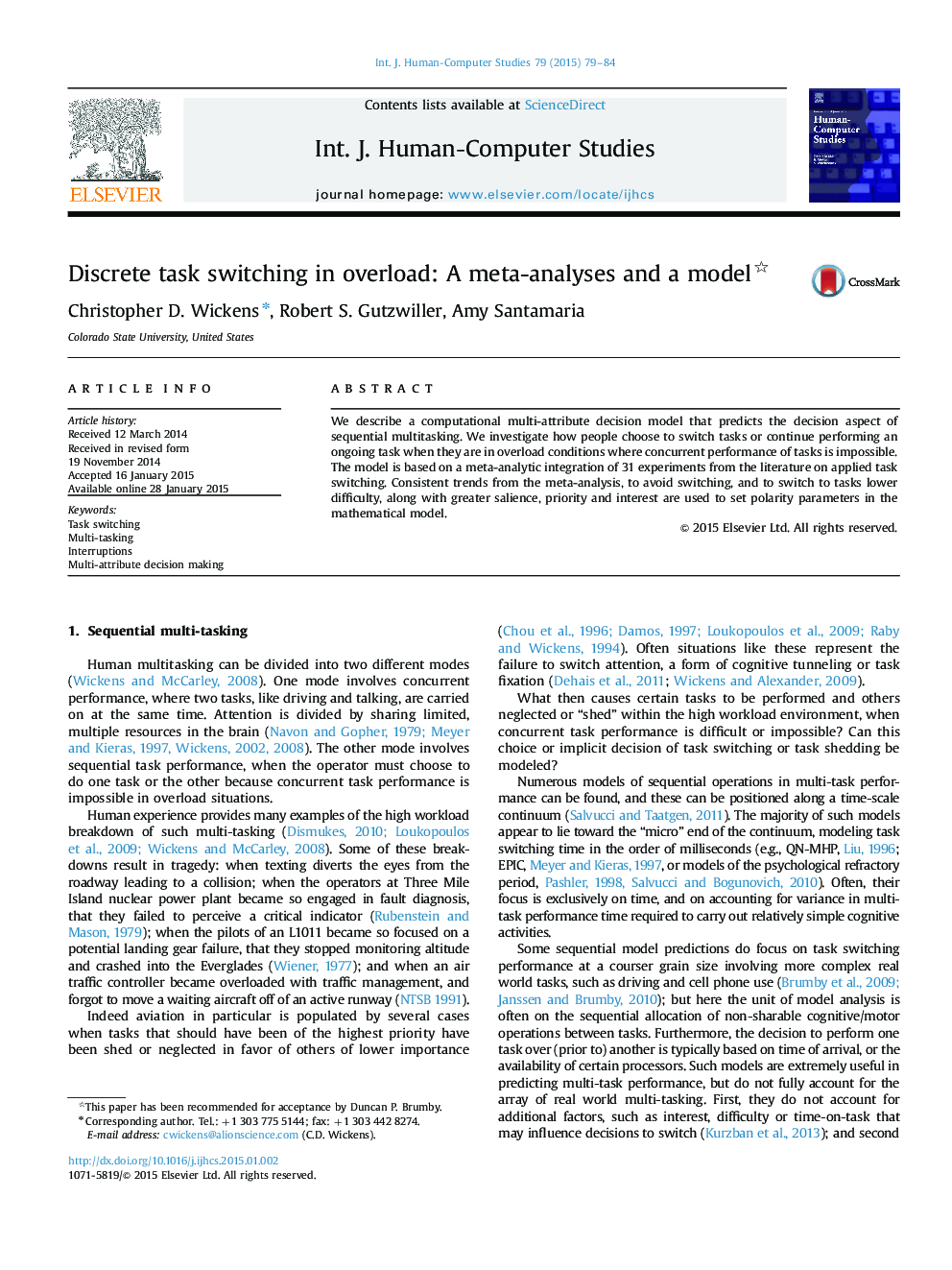| Article ID | Journal | Published Year | Pages | File Type |
|---|---|---|---|---|
| 400664 | International Journal of Human-Computer Studies | 2015 | 6 Pages |
•A decision model of multi-task attention switching is presented.•The model posits that task switching is based on attractiveness attributes of alternative tasks, related to salience, difficulty, interest and priority.•A fundamental bias against task switching is included.•The weights and polarity of these attributes are based on two meta-analyses of applied task switching data, which are presented.
We describe a computational multi-attribute decision model that predicts the decision aspect of sequential multitasking. We investigate how people choose to switch tasks or continue performing an ongoing task when they are in overload conditions where concurrent performance of tasks is impossible. The model is based on a meta-analytic integration of 31 experiments from the literature on applied task switching. Consistent trends from the meta-analysis, to avoid switching, and to switch to tasks lower difficulty, along with greater salience, priority and interest are used to set polarity parameters in the mathematical model.
